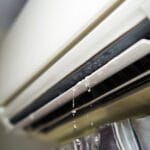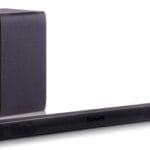Hedge trimmer not working right? Don’t worry, you’re not alone.
Many people face issues with their hedge trimmers, and most problems can be fixed at home. In this blog post, we’ll guide you through common hedge trimmer problems and their solutions. Knowing how to troubleshoot your hedge trimmer can save you time and money.
Whether it’s a gas, electric, or battery-powered model, understanding its common issues helps keep your garden looking neat. By the end, you’ll feel more confident in handling minor repairs and maintenance. Let’s dive in and get your hedge trimmer back in action!
Introduction To Hedge Trimmer Troubleshooting
Learn how to fix common issues with your hedge trimmer. Easy steps to get it working again. Save time and effort.
Owning a hedge trimmer can make garden maintenance easier. Sometimes, these tools face problems. Knowing how to troubleshoot can save time and money. This guide will help you fix common hedge trimmer issues.
Importance Of Regular Maintenance
Regular maintenance keeps your hedge trimmer running smoothly. It prevents major problems and extends the tool’s life. Clean the blades after each use. Remove any stuck debris to avoid blade damage. Check the power source to ensure it works correctly. Routine checks can prevent unexpected breakdowns.
Tools You Will Need
Having the right tools is essential for troubleshooting. A clean cloth helps in wiping down the trimmer. A screwdriver is needed to open the tool’s casing. Use a small brush to remove dirt from tight spots. Oil or lubricant keeps the blades moving smoothly. A voltage tester checks if the power source is working. With these tools, you can solve most common issues.
“`
Trimmer Fails To Start
Dealing with a hedge trimmer that fails to start can be frustrating. There are a few common reasons for this issue. Let’s look at two main areas to troubleshoot: checking the fuel supply and inspecting the spark plug. These steps can help get your trimmer running smoothly again.
Check Fuel Supply
First, ensure there is enough fuel in the tank. An empty or low fuel tank can stop the trimmer from starting. Use fresh fuel, as old fuel can cause issues. Check for any leaks in the fuel line. If you find a leak, replace the line immediately.
Inspect Spark Plug
The spark plug is another critical component. Remove the spark plug and inspect it for dirt or damage. A dirty spark plug can prevent the engine from starting. Clean it with a brush or replace it if necessary. Ensure the spark plug is properly connected and tightened.
Engine Runs Poorly
Is your hedge trimmer engine running poorly? It can be frustrating when your hedge trimmer doesn’t run smoothly. This issue can affect your trimming tasks and leave your garden looking unkempt. Let’s explore some common fixes.
Clean Air Filter
The air filter plays a crucial role in the performance of your hedge trimmer. A dirty air filter can restrict airflow to the engine. This can make the engine run poorly.
First, locate the air filter. It’s usually found near the carburetor. Remove it carefully. Check for dirt and debris. If the filter is dirty, clean it with soapy water. Rinse it thoroughly and let it dry completely before reinstalling. If the filter is damaged, replace it with a new one.
Adjust Carburetor
The carburetor mixes air and fuel for the engine. If this mix is off, the engine may run poorly. You might need to adjust the carburetor settings.
First, find the adjustment screws on the carburetor. Typically, there are two screws: one for low speed and one for high speed. Turn the screws slightly to find the right mix. A small turn can make a big difference. Listen to the engine as you adjust. Aim for a smooth, steady sound.
If you are unsure, consult your hedge trimmer’s manual. It will have specific instructions for your model.

Credit: www.ebay.com
Blades Not Cutting Properly
Experiencing trouble with hedge trimmer blades not cutting properly? This common issue can be frustrating. The good news is, you can often resolve it with a few simple checks and adjustments. Below are some practical steps to get your hedge trimmer back to peak performance.
Sharpen Blades
Dull blades are a primary reason for poor cutting. Regular sharpening is crucial. Use a flat file or sharpening stone. Keep the angle consistent while sharpening. This ensures even and effective cutting.
After sharpening, clean the blades. Remove debris and sap. Lubricate them to prevent rust. Sharp, clean blades make the trimming process smoother and more efficient.
Check Blade Alignment
Misaligned blades can also cause cutting problems. Check the alignment by looking down the length of the blades. They should be parallel. Adjust if necessary.
If the blades are bent, straighten them. Use pliers or a wrench. Aligning the blades correctly ensures they cut evenly and efficiently. Regular checks can prevent future issues.
Excessive Vibration
Excessive vibration in a hedge trimmer can make the tool hard to handle. It can also cause discomfort and lead to poor trimming results. Understanding how to troubleshoot and fix this issue is essential.
Tighten Loose Parts
Loose parts can cause excessive vibration. Regularly check screws, nuts, and bolts. Use a wrench or screwdriver to tighten any that are loose. Ensure all components are secure before using the trimmer again.
Inspect Anti-vibration Mounts
Anti-vibration mounts reduce the machine’s movement. Over time, these mounts can wear out or break. Inspect the mounts for any damage or wear. Replace them if they are not in good condition. This can significantly reduce vibration and make the trimmer easier to use.
Overheating Issues
Overheating issues are common in hedge trimmers. It can cause damage to the engine. Understanding the causes can help you fix them quickly. Regular maintenance is essential to avoid overheating.
Clean Cooling Fins
Cooling fins help keep the engine cool. Dirt and debris can block them. This prevents proper cooling and leads to overheating. Clean the fins regularly to ensure air can flow freely. Use a brush or compressed air for this task. Keeping the fins clean will extend the trimmer’s life.
Check Fuel Mixture
An incorrect fuel mixture can cause overheating. Most hedge trimmers need a specific mix of gasoline and oil. Check the manual for the right ratio. Too much oil can clog the engine. Too little oil can cause friction. Both can lead to overheating. Always mix fuel properly before use.
Trimmer Stalls During Operation
Is your hedge trimmer stalling during use? This can be frustrating. But don’t worry, you can fix it. Below are some steps to troubleshoot the issue.
Inspect Fuel Lines
First, check the fuel lines. These lines carry fuel from the tank to the engine. If there’s a problem, the engine won’t get enough fuel. This can cause the trimmer to stall.
- Look for cracks or holes in the fuel lines. Replace them if needed.
- Ensure the fuel lines are connected properly. Loose connections can cause leaks.
- Check for dirt or debris inside the lines. Clean them if necessary.
Check For Blockages
Next, check for blockages. A blocked air filter or exhaust can cause the engine to stall.
Follow these steps:
- Remove the air filter. Check if it’s dirty or clogged.
- Clean the air filter with soap and water. Let it dry completely.
- If the filter is damaged, replace it with a new one.
- Inspect the exhaust for blockages. Clear any debris you find.
By following these steps, you can ensure your hedge trimmer runs smoothly. Regular maintenance can prevent stalling issues.
Preventive Maintenance Tips
Hedge trimmers need regular care to stay in top shape. This ensures they work well and last longer. Following some simple preventive maintenance tips can make a big difference.
Regular Lubrication
Lubricating your hedge trimmer is crucial. It keeps the blades moving smoothly. Apply a few drops of oil on the blades before and after each use. This prevents rust and reduces wear. Use a lightweight machine oil for best results.
Focus on the pivot points and cutting edges. These areas need the most lubrication. Regular oiling helps keep the trimmer quiet and efficient.
Proper Storage
Storing your hedge trimmer correctly is vital. Always clean it before storage. Remove any debris or sap from the blades. This prevents corrosion and damage.
Store the trimmer in a dry place. Avoid damp or humid areas. Use a blade cover to protect the blades. This keeps them sharp and ready for the next use.
Keep the trimmer out of children’s reach. Ensure it is unplugged if electric or the battery removed if cordless. Proper storage extends the life of your tool.
When To Seek Professional Help
When dealing with hedge trimmer problems, sometimes DIY fixes are not enough. Complex issues can arise, requiring the expertise of a professional. Knowing when to seek help can save time and prevent further damage. Let’s delve into the key indicators that signal the need for professional assistance.
Identifying Major Issues
Struggling with persistent power problems? This could indicate serious electrical faults. If the trimmer makes strange noises, internal damage might be the cause. Unusual vibrations often point to mechanical issues. These are not easily fixed at home.
Smoke or a burning smell? This is a red flag. Stop using the trimmer immediately. Such signs often relate to motor or wiring issues, which need expert attention.
Finding A Reliable Technician
Choosing the right technician ensures quality repairs. Start by checking online reviews. Recommendations from friends or neighbors can also be valuable. Look for certified professionals with experience in hedge trimmer repair.
Verify their credentials. Reliable technicians should have proper certifications. Ask about their experience with your trimmer brand. This ensures they understand your specific model’s needs.
Request a quote before agreeing to repairs. This helps avoid unexpected costs. A reliable technician will provide a clear estimate.

Credit: m.youtube.com

Credit: mte.us.com
Frequently Asked Questions
Why Is My Hedge Trimmer Not Starting?
A faulty spark plug, dirty air filter, or empty fuel tank can prevent starting. Check these first.
How Do I Sharpen Hedge Trimmer Blades?
Use a flat file to sharpen the blade edges. Maintain the original angle for best results.
Why Is My Hedge Trimmer Overheating?
Overheating can be caused by blocked air vents, dull blades, or extended use. Clean vents and sharpen blades.
What Should I Do If My Hedge Trimmer Is Smoking?
Smoking often means oil or fuel is burning improperly. Check for leaks and ensure proper fuel mix.
How Often Should I Service My Hedge Trimmer?
Service your hedge trimmer annually. Regular maintenance includes cleaning, blade sharpening, and checking for worn parts.
Conclusion
Troubleshooting a hedge trimmer can seem daunting, but it’s manageable. Follow the steps mentioned, and you will likely find the solution. Regular maintenance helps prevent most issues. Always check for loose parts and ensure everything is clean. Use the right fuel mix for gas models.
Electric trimmers need proper power supply and cord checks. Don’t ignore unusual sounds or vibrations. Address these early to avoid bigger problems. Keep your trimmer in top shape for efficient performance. Happy trimming!




